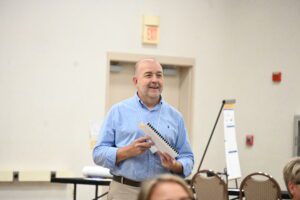
Dr. Anthony F. Maxwell
Associate Director of Attendance and Engagement
As National Attendance Awareness Month begins, I think back on 30 years in education—and it’s not the ceremonies or milestones I remember most, but the everyday moments that shape students’ lives.
The morning a student shows up after missing a week.
The teacher who pauses long enough to ask, “What’s going on?” in a calm and supportive voice.
The parent who says, “It wasn’t easy, but we made it to school.”
The grandmother who calls to ask for help getting her grandson to school.
The FRC director asks, “Do you have time for a home visit.”
The custodian who greets each child by name.
The local business owner who adds a message about attendance to their shop receipt.
The retiree who finds time to volunteer as a mentor.
These moments build something much larger than a daily attendance sheet. They build belonging, community, and hope—one relationship at a time.
When I was a student, I didn’t show up every day for academics alone. I came because adults cared about me, because my mother expected more for me, because I was engaged in extracurriculars, because I had a team depending on me, and because I didn’t want to let down those who believed in me.
Now, as an educator and community partner, I show up because I’ve seen what school can mean—not just for students, but for families, for school employees, and for the future of a region.

Why Attendance Matters
“Why be at school?” is a community question. We often hear this question in the context of students. But every adult in a school building, every caregiver at home, and every partner in the community plays a role in answering it. For teachers and staff, it’s a reminder of why we entered this work in the first place: to shape lives, open doors, and build opportunity. For families, it’s a call to partnership—not punishment. We understand showing up isn’t always easy, but it’s always worth it. For communities, it’s an investment in our shared future.
When students attend school consistently, the benefits ripple outward:
- Lower dropout rates
- Higher civic engagement
- Stronger workforce readiness
- More youth pursuing college, career, or service leadership
- Economic mobility that starts in the classroom but expands to the community
Attendance isn’t just an educational issue. It’s a public good. When young people show up and stay engaged, they’re more likely to become the teachers, nurses, business owners, voters, volunteers, and leaders their communities need.
Across rural Eastern Kentucky, we see both the challenges and the opportunities. Chronic absenteeism rose during the pandemic and continues to be a concern. But schools and communities are responding with innovation:
- Book vending machines in elementary schools that celebrate reading and showing up.
- Local businesses posting attendance messages on pizza boxes, receipts, and movie theater screens.
- Mentorship programs where adults walk alongside students to remove barriers.
- School staff making home visits, not to punish, but to partner with families in supporting children.
These trends remind us: solutions to absenteeism are most powerful when they’re rooted in community.
Here are a few ways we can all help students show up and thrive:
- Build relationships first. Students are more likely to come when they know someone cares about them. A simple “I’m glad you’re here” goes a long way.
- Partner with families. Instead of leading with rules or consequences, start by listening. Ask what makes getting to school difficult—and what supports might help.
- Make school a place students want to be. From engaging lessons to welcoming environments and student voice & choice, the climate of a school matters as much as its curriculum.
- Connect community resources. Transportation, after-school care, career exploration, community service, and mentorship programs are lifelines that remove barriers for families and engage students to help us keep our talent in our communities for the long-term.
So this September, during Attendance Awareness Month, we’re asking: Why be at school? And just as importantly: How can we make sure school is a place people want to be?
Whether you’re a student, an educator, a parent, or a community leader, your voice matters. Share your “why” with us on social media using #WhyBeAtSchool.
Together, we can build a culture of showing up—because the future really is built one day at a time.
About the Author
Dr. Anthony Maxwell has spent three decades shaping education across Southeastern Kentucky and Northeastern Tennessee. He began his career as an elementary teacher at Middlesboro Elementary School in Kentucky while also serving as an adjunct faculty member at Lincoln Memorial University in Harrogate, Tennessee. Over the years, he has served as an instructional coach, school principal, and central office administrator, gaining a reputation for building strong schools and lasting community partnerships. Today, he is the Associate Director of Attendance and Engagement at Partners for Rural Impact, where he works with schools and families to strengthen student success. With 30 years of experience, Tony brings both deep knowledge and practical wisdom to his belief that attendance, belonging, and relationships are the cornerstones of learning and opportunity.

Showing Up Together: Stories of Attendance in Action
When September began, I asked a simple question: “Why be at school?” Over the past few weeks, I’ve seen that question answered in classrooms, homes,
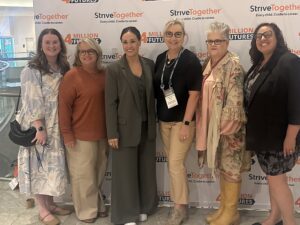
The Power of Striving Together
Last week I had the opportunity to attend my first StriveTogether Cradle to Career Network Convening. On my flight to Atlanta, I kept thinking about
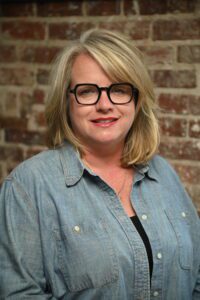
One of 15: Rosie Stafford Earns Prestigious GPC Certification
We are thrilled to share that our Program Manager, Rose-Linda “Rosie” Stafford, has joined an elite group of just 15 professionals in Kentucky to earn
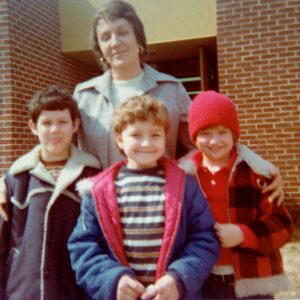
Why Be at School? Because the Future Is Built One Day at a Time
As National Attendance Awareness Month begins, I think back on 30 years in education—and it’s not the ceremonies or milestones I remember most, but the
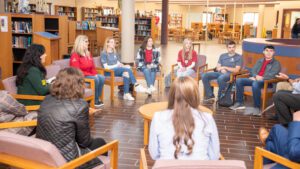
Rural AmeriCorps: Building Communities from the Inside Out
— Dreama Gentry, President and CEO, Partners for Rural Impact AmeriCorps is often framed as an urban program, where young people travel to unfamiliar cities
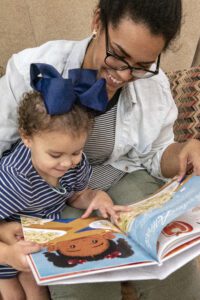
Turning the Page on Our Literacy Crisis Will Require All of Us
Editor’s Note: This blog post is co-authored by Dr. Felicia Cumings Smith, President & CEO of the National Center for Family Learning, and Dreama Gentry,
